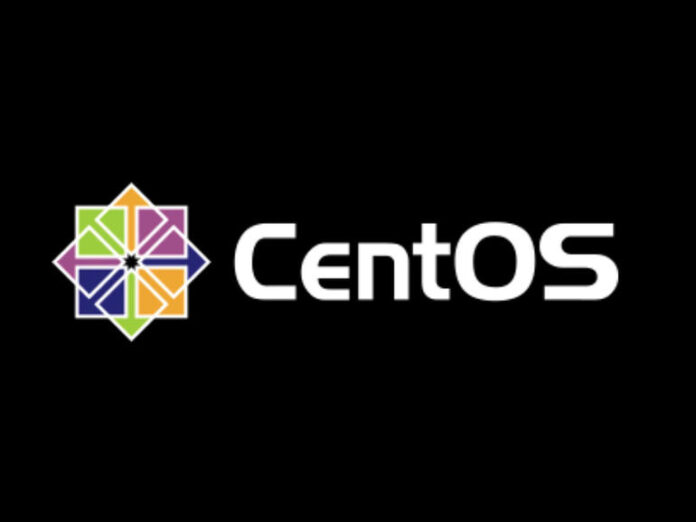Red Hat, CentOS‘s Linux parent company, announced last week it was “shifting focus from CentOS Linux, the rebuild of Red Hat Enterprise Linux (RHEL), to CentOS Stream, which tracks just ahead of a current RHEL release.” CentOS users were, shall we say, not amused.
OK, actually, they’re fit to be tied. That’s because millions of users have been using CentOS as a stable point distribution for their servers, virtual machines, and appliances.
These aren’t just small businesses. Top companies that rely on CentOS Linux include Disney, GoDaddy, RackSpace, Toyota, and Verizon. Other important technology companies build products around CentOS. These include GE, Riverbed, F5, Juniper, and Fortinet.
What can these and all the other companies which use CentOS every day do? They can look at alternative Linux distributions. According to a CloudLinux survey, most CentOS users, 60.5%, are waiting for a CentOS fork to be released. Of the rest, 16.7% are looking to Debian Linux, 12.4% are considering Ubuntu, while 10.4% are thinking about openSUSE.
In my own conversations with Linux executives, Ubuntu is getting mentioned more often than any other Linux distro. That’s not surprising since Ubuntu is the most popular server and cloud operating system. Others that have been getting mentioned a lot are RHEL and Amazon Linux. People who are developers, sysadmins, and technicians are much more likely to talk up CentOS forks.
Ubuntu
Canonical‘s Ubuntu needs no introduction. It’s very popular on desktops, servers, and the cloud. For companies looking for a brand-name switch, Ubuntu is already drawing attention. Debian, while also popular, is Ubuntu’s direct ancestor, but there’s no corporate support for it. If you’re already a Debian expert, then by all means continue to use it. But, if you’re not, Ubuntu’s a better choice.
But unlike the distros I’ll be mentioning, Ubuntu has one big problem: It is not a RHEL relation. It’s from the Debian Linux family tree. It also uses many software packages that CentOS (such as snap instead of flatpak for easy application installation) doesn’t use.
Can you move from CentOS to Ubuntu? Of course. People do it every day. But, when you move to Ubuntu, you’re making a major move. With all the other distros I’m going to mention, it’s a more minor move.
Is it worth it? It depends on your needs. If you’re a large company that can afford to port your in-house apps, or if you’re a smaller business that depends on standard Linux, Apache, MySQL, PHP/Perl/Python (LAMP) applications such as WordPress, move to Ubuntu. If you’re not, or rely on a lot of CentOS specific code, then try one or more of the Linux distros below.
Like CentOS, many people run Ubuntu without support. If you need Ubuntu support, Ubuntu Advantage for Infrastructure starts at $225 for Essential Support for a physical server and $75 for a virtual server.
Red Hat Enterprise Linux
OK, I know most of you are ticked off at Red Hat, but let’s get real. If you want a plug-and-play alternative to CentOS, it doesn’t get any better. Now you scream and curse all you want, but if your business depends on CentOS and you can’t afford the time and effort needed to move to another platform, RHEL may be your best choice.
RHEL server prices start at $349 without support. With standard support, RHEL server pricing begins at $799.
CentOS/CentOS Stream
If you’re using CentOS 7, you don’t have to move immediately. Red Hat will continue to support CentOS 7 and update it through the rest of the RHEL 7 life cycle. That means, if you’re using CentOS 7, you’ll see support through June 30, 2024. Red Hat may also offer extended life cycle support for RHEL and CentOS 7, but that hasn’t been decided yet.
As for CentOS 8, OK, you’re hosed. Red Hat will only continue to update it until the end of 2021. CentOS 8 users had expected support until 2029. That is so not happening now.
CentOS Stream is not a replacement for CentOS. Red Hat CTO Chris Wright came right out and said: “CentOS Stream isn’t a replacement for CentOS Linux.” Red Hat sees CentOS Stream as a DevOps-friendly, continuous integration and continuous delivery (CI/CD) Linux.
That’s great if that’s what you need, but that’s not CentOS’s job for most companies. They want a rock-stable Linux server for their websites and their LAMP applications. But before you do a knee-jerk reaction, think about how you’ll be using CentOS in the future. It may just be that CentOS Stream will be a better fit for your needs than you first thought.
Oracle Linux
Fourteen years ago, Oracle introduced its “own” Linux. I place “own” in quotes because Oracle Linux has always been a copy of RHEL. That’s not a bad thing now for CentOS users. But, keep in mind, Oracle’s never been all that open-source friendly — just ask OpenSolaris fans.
Still, Oracle saw its chance to finally get some users for its not terribly popular Oracle Linux by swiftly introducing scripts, which will let you quickly and automatically porting you from CentOS 6. 7, or 8 to Oracle Linux. It does not, tellingly, support porting from CentOS Stream.
I’ve tested it myself and I easily moved CentOS 6 and 7 servers to Oracle Linux. If you’re using Spacewalk or Foreman to manage your CentOS servers, however, you won’t be able to use these scripts.
Oracle promises that Oracle Linux, source code and binaries, will remain free. Of course, if you want support, that will cost you. Annual Oracle Linux support will ding your credit-card bill for $1,199.
Amazon Linux
Amazon Web Services (AWS) doesn’t make a point of it, but the Amazon Linux AMI, which runs on the Amazon Elastic Compute Cloud (Amazon EC2), is also a CentOS-based RHEL clone. Of course, you can use it on AWS, but for many users, that will be just fine.
It comes pre-installed with many AWS API tools and CloudInit. CloudInit allows passing instance configuration actions to instances at launch time via the EC2 user-data fields. This lets you remotely configure Amazon EC2 instances.
The Amazon Linux AMI is provided at no additional charge to Amazon EC2 users. If you’re already running your CentOS servers on AWS, you should check Amazon Linux out. It may well be your easiest and cheapest alternative.
CloudLinux OS
Another RHEL clone, CloudLinux, has made a business of taking RHEL and CentOS code and fine-tuning the resulting operating system to be a high-performance, light-weight server for multi-tenant web and server hosting companies. They’ve been doing it since 2010 and they’re good at it. I’ve used CloudLinux OS myself and it works well.
But CloudLinux isn’t just offering the RHEL take as an alternative. The company is also putting over $1 million a year behind its own CentOS clone: Project Lenix.
This, CloudLinux promises, will be a “free, open-sourced, community-driven, 1:1 binary compatible fork of RHEL 8 (and future releases) in the Q1 of 2021. . . . We will sponsor the development & maintenance of such OS. We will work on establishing a community around the OS, with the governing board from members of the community.”
Igor Seletskiy, CloudLinux’s CEO and founder, said: “Red Hat’s announcement has left users looking for an alternative with all that CentOS provides and without the disruption of having to move to alternative distributions. We promise to dedicate the resources required to Project Lenix that will ensure impartiality and a not-for-profit community initiative. CloudLinux already has the assets, infrastructure, and experience to carry out the mission, and we promise to be open about the process of developing Project Lenix.”
Like Oracle, CloudLinux offers a script to convert existing CentOS servers without any customer configs or data changes to CloudLinux OS. A single server license runs $168 annually. If you opt for multiple servers, the license price drops per instance.
Rocky Linux
CentOS had a long, successful history before Red Hat acquired CentOS in 2014. For not quite 10 years, CentOS was a major independent Linux server distribution. In no small part that was because of the hard work that co-founders Greg Kurtzer and Rocky McGough put into CentOS. McGough has passed, but Kurtzer lives on and has started a new RHEL/CoreOS fork named in Rocky’s honor: Rocky Linux.
Rocky Linux, like the pre-Red Hat CentOS, will be a free, community-based server-oriented Linux. Rocky doesn’t have a release date yet, but it does have a great deal of support. It was for a time the top trending GitHub repository and it already has over 650 would-be contributors.
HPE ClearOS
Do you have a small business that relies on CentOS on HPE ProLiant servers? Good news. There’s already a CentOS/RHEL compatible Linux ready and waiting for you: HPE ClearOS.
HPE’s main selling point for ClearOS has been that with it SMBs have an HPE Linux server that is ready to go right out of the box. It comes in three versions: A free one; a home edition that costs $36 a year; and a Business Edition that starts at $108 a year.
If you’re already invested in HPE and you’re not a Linux expert, ClearOS is an excellent choice. I (and I know many other SMB users) like having only one company for both our hardware and software support.
Scientific Linux
Some people with long memories are saying, “Why not go back to Scientific Linux?” True, Scientific Linux is still around — contrary to what you might have read elsewhere — but its backers, FermiLabs, announced in 2019 that while they’d still support Scientific Linux 7, they were going to not release another major release. Instead, they were switching to CentOS 8.
That happened, however, long before Red Hat announced its CentOS changes. Since one of Scientific Linux’s main goals is stability, they and their partners may yet decide to revive Scientific Linux. But I wouldn’t count on it. In any case, if you this distro, you’re on your own. There’s no business support for it.
Springdale Linux
In the meantime, if you want an academic CentOS Linux, you want Springdale Linux from the computing staff of Princeton University and the Institute for Advanced Study. Springdale may be obscure, but its developers boast they had Springdale Linux 8 Springdale 8 out before CentOS released theirs. True, the DVD ISOs for 8 are not available, but the Boot/PXE ISOs for Springdale Linux 8.3 are already available for download
You may never have heard of it, but it actually dates back to before CentOS appeared. It’s very much an academic distro. I can recommend it to Linux-savvy researchers and computer science students, others should look above for a more ordinary user or business distribution.
Making the Right Call
So, which should you get? It depends on you and your needs. Calm down from your rage about CentOS, take some time off for the holidays, and then take a long, hard look at what you’re doing today with CentOS. Next, pick out a couple of distros from above and see how well they fit your needs.
Good luck. We will make it through.





